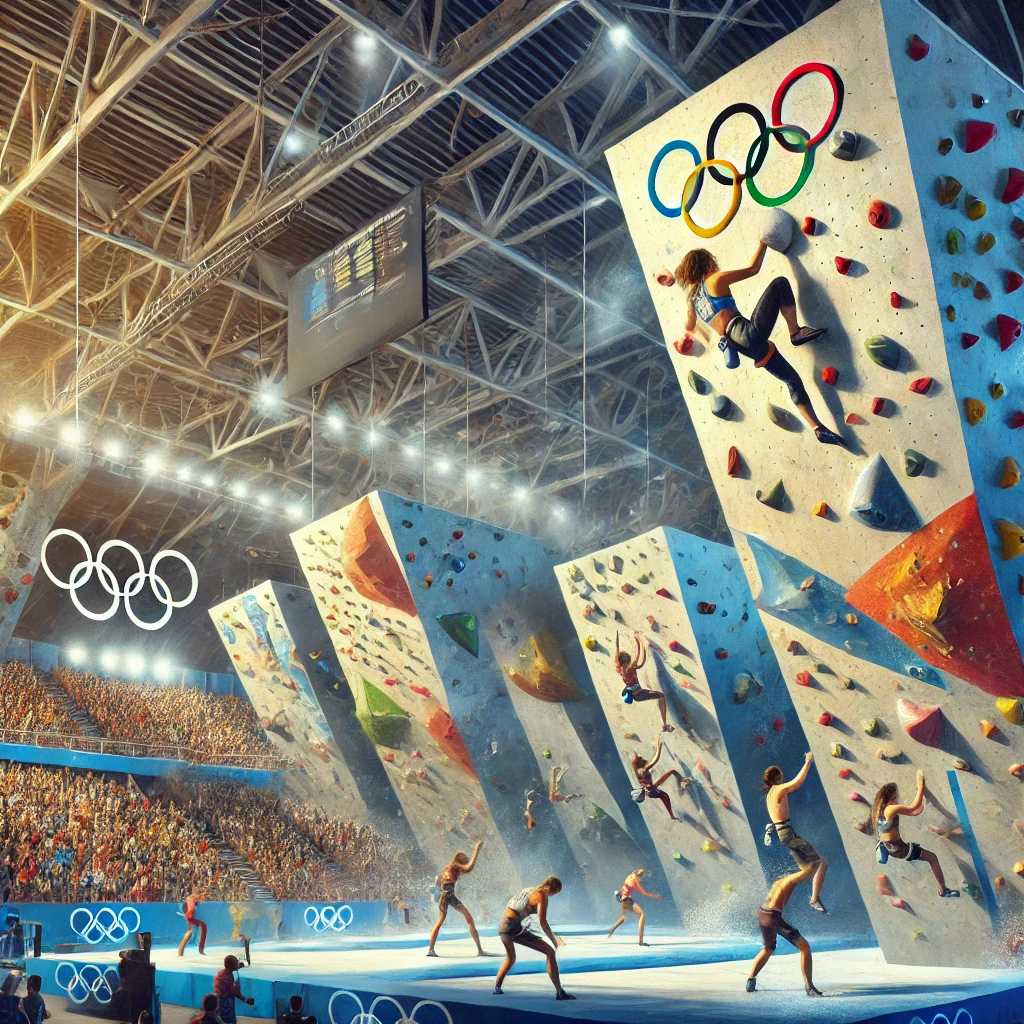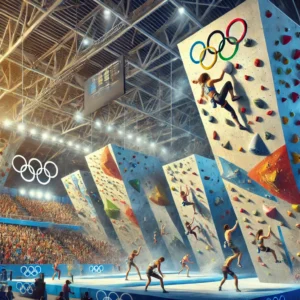Your cart is currently empty!

Sport Climbing at the Olympics: The Combined Event
Sport Climbing at the Olympics: The Combined Event
Sport climbing made its debut at the Olympic Games in Tokyo 2020, attracting global attention with its unique combination of athleticism, strategy, and skill. The inclusion of sport climbing in the Olympics marked a significant milestone for the sport, showcasing three distinct disciplines: speed climbing, bouldering, and lead climbing. These disciplines were combined into a single event, creating a multifaceted challenge that tested the climbers’ versatility and adaptability. Let’s explore each of these disciplines, their characteristics, and the impact of the combined format on the competition.
Speed Climbing
Speed climbing is a race against the clock, where two climbers compete head-to-head on a standardized 15-meter wall with a fixed route. The objective is straightforward: reach the top as quickly as possible. The holds and the path are identical in every competition, allowing climbers to memorize the moves and perfect their techniques over time.
The format of speed climbing at the Olympics was a knockout tournament, where climbers faced off in a series of rounds. Reaction time, explosive power, and precise footwork are crucial for success in speed climbing. The discipline requires a unique skill set compared to other climbing types, as climbers must develop specialized techniques to achieve maximum efficiency.
Bouldering
Bouldering is characterized by short, powerful climbs on a low wall, usually no higher than 4.5 meters, without the use of ropes. Climbers attempt a series of problems, or routes, within a fixed time limit, usually four to five minutes per problem. The problems vary in difficulty, requiring climbers to demonstrate a mix of strength, balance, and creativity to solve them.
At the Olympics, the bouldering competition consisted of four problems, each presenting different challenges. Climbers are allowed multiple attempts to solve each problem, with the aim of reaching the top or a designated zone hold. Points are awarded based on the number of tops and zones reached, as well as the number of attempts taken. Bouldering tests the climbers’ ability to adapt to unfamiliar challenges and requires a high level of problem-solving skills.
Lead Climbing
Lead climbing involves ascending a taller wall, typically around 15 meters, with the climber securing the rope into quickdraws along the route as they climb. The goal is to reach the highest point possible within a six-minute time limit. If a climber falls, their height is measured, and that mark is used to determine their score.
The routes in lead climbing are more complex and endurance-based, requiring climbers to manage their energy and make strategic decisions about when to rest and when to push through challenging sections. The ability to read the route and plan ahead is essential, as is maintaining focus and composure under pressure.
The Combined Format
The Olympic format combined all three disciplines into a single event, with athletes competing in each discipline on the same day. The results from each discipline were multiplied to determine the final ranking, meaning a lower overall score was better. This format was chosen to test the climbers’ all-around abilities and ensure a balanced competition.
The combined format posed unique challenges for climbers, as they needed to excel in all three disciplines to secure a podium finish. While some athletes may have specialized in one discipline, success required them to adapt and perform across the board. This format highlighted the diversity of skills within the sport and encouraged climbers to develop a well-rounded approach to their training.
Impact and Reception
The inclusion of sport climbing in the Olympics brought significant attention to the sport, attracting new fans and inspiring a new generation of climbers. The event showcased the athleticism and creativity of the climbers, with dramatic and engaging competitions that captivated audiences worldwide.
However, the combined format also faced criticism from some within the climbing community. Critics argued that combining the three disciplines favored all-around climbers and did not fully represent the distinct nature of each discipline. As a result, for the Paris 2024 Olympics, the format was adjusted to feature two separate medal events: speed climbing as one event and a combined bouldering and lead event as another. This change reflects the desire to recognize the unique skills required for each discipline while still celebrating the versatility of the athletes.
Training for the Olympics
Training for the Olympic combined event requires a comprehensive approach that balances the demands of each discipline. Climbers must develop explosive speed for the speed climbing segment, powerful and dynamic movement for bouldering, and endurance and route-reading skills for lead climbing. This diverse training regimen often involves strength and conditioning exercises, technical drills, and mental preparation to handle the pressure of competition.
Many Olympic climbers work with coaches to develop tailored training programs that address their individual strengths and weaknesses. Nutrition, recovery, and injury prevention are also critical components of an athlete’s preparation, as the intense physical demands of climbing can lead to strain and overuse injuries.
Conclusion
The debut of sport climbing at the Tokyo 2020 Olympics marked a significant milestone for the sport, bringing together the distinct disciplines of speed climbing, bouldering, and lead climbing into a challenging combined format. While the format posed unique challenges for the athletes, it also showcased the versatility and adaptability of the climbers, highlighting the diverse skill set required to excel at the highest level. As the sport evolves and continues to grow in popularity, its inclusion in the Olympics serves as a testament to the dedication and passion of the climbing community worldwide.
Sport climbing’s Olympic journey is still in its early stages, with future competitions likely to see further developments and refinements. The excitement and innovation demonstrated by climbers in the Olympics inspire athletes of all ages to explore the possibilities of climbing and push the boundaries of what is achievable. As we look forward to the Paris 2024 Games and beyond, sport climbing will continue to captivate audiences and inspire new generations to take on the challenge of the vertical world.
投稿者:
タグ:

コメントを残す